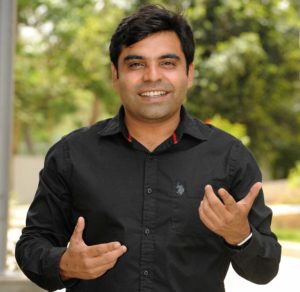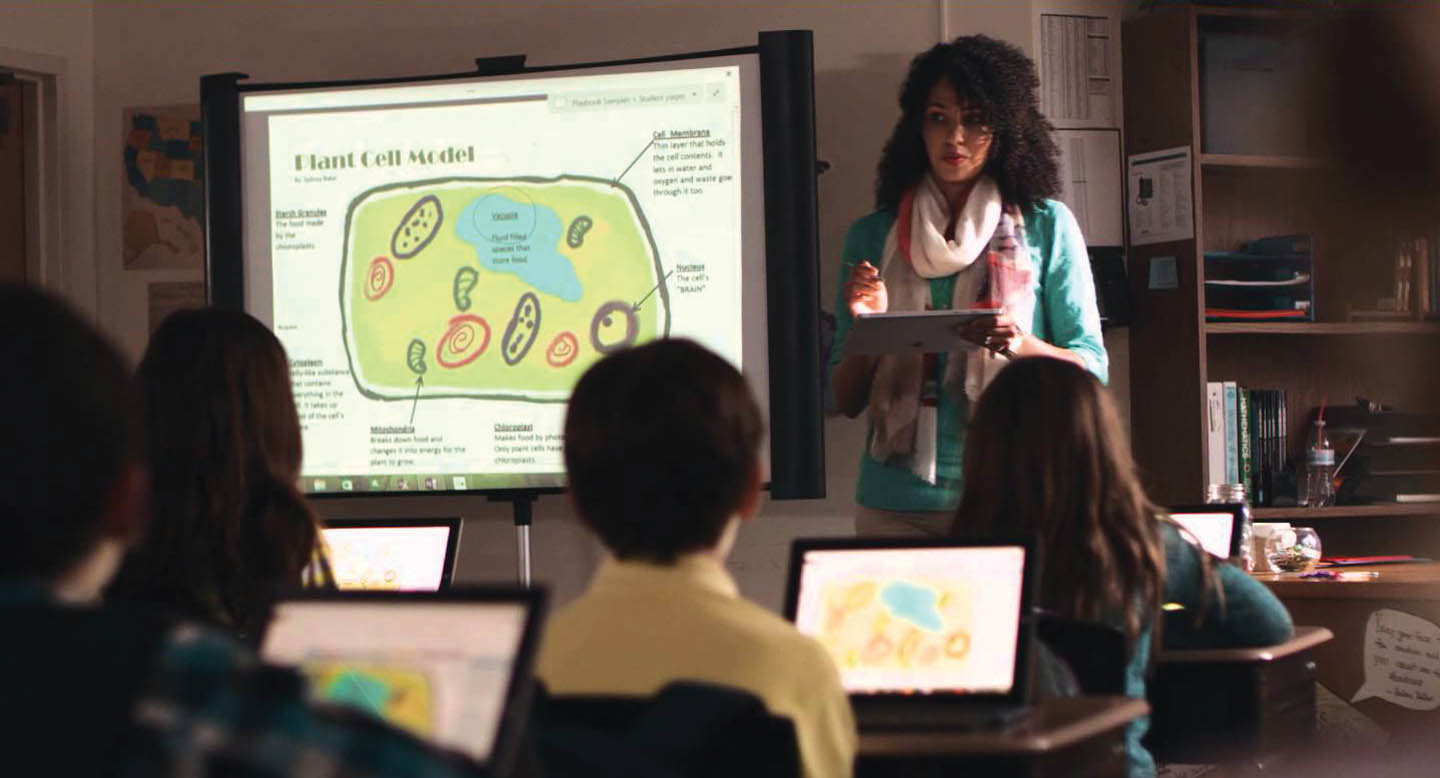The founders of Edureka had a simple thought while setting up the company: Find the right teacher, and any course will automatically be effective.
 Lovleen Bhatia and Kapil Tyagi, erstwhile employees at Infosys Technologies, found their calling in entrepreneurship after their journey in the professional world. Subsequent to their stint in Infosys Technologies, the duo moved on to work in other corporates. Eventually, Tyagi set up a mobile app company in Noida, which Bhatia joined. “While running the organization, we realized that people who were being recruited had no idea about what to do as their education had not trained them. Also, with technology changing so much, those who were in employment couldn’t scale up as quickly and were becoming irrelevant,” says Lovleen Bhatia. He and Tyagi realized that it was not a demand side problem but was more a supply side one and the duo wanted to do something to solve it and thus was born Edureka in 2012. The company was set up with an idea of getting industry practitioners on board its platform to teach the students. “We decided to get practitioners to teach since finding instructors on a full time basis was difficult largely due to poor remuneration,” explains Bhatia. He continues, “Not just this, learning from an Android or Big Data expert gives one a practical learning experience as compared to what one gets from a traditional institute where you realise that the people who are teaching you may not have worked on this and do not have the competency on the topic.” To get over the issue of time and compensation, the company decided to make it an online teaching platform.
Lovleen Bhatia and Kapil Tyagi, erstwhile employees at Infosys Technologies, found their calling in entrepreneurship after their journey in the professional world. Subsequent to their stint in Infosys Technologies, the duo moved on to work in other corporates. Eventually, Tyagi set up a mobile app company in Noida, which Bhatia joined. “While running the organization, we realized that people who were being recruited had no idea about what to do as their education had not trained them. Also, with technology changing so much, those who were in employment couldn’t scale up as quickly and were becoming irrelevant,” says Lovleen Bhatia. He and Tyagi realized that it was not a demand side problem but was more a supply side one and the duo wanted to do something to solve it and thus was born Edureka in 2012. The company was set up with an idea of getting industry practitioners on board its platform to teach the students. “We decided to get practitioners to teach since finding instructors on a full time basis was difficult largely due to poor remuneration,” explains Bhatia. He continues, “Not just this, learning from an Android or Big Data expert gives one a practical learning experience as compared to what one gets from a traditional institute where you realise that the people who are teaching you may not have worked on this and do not have the competency on the topic.” To get over the issue of time and compensation, the company decided to make it an online teaching platform.
Edureka was shaped up with the thought that if one had to improve education, they should get the right people to teach it and, hence, got high quality practitioners to teach part time.
Teachers, the key
The company has strict guidelines that it follows while choosing an instructor and, whenever required, it trains them too. People who teach at Edureka are practitioners who have experience of over 10 years to 15 years in the subject area. “They take some time off from their schedule during weekends or weekdays and go live and teach the students online,” says Bhatia.
This apart, they need to posses strong communication skills. “We also give them training and ensure that they can deliver to a global audience with a neutral accent,” says he.
It has around 800 instructors on its platform and boasts of very high rate of retention. “Our first instructor is still with us,” beams a proud Bhatia. In the last 3.5 years since the company’s incorporation, the team has found that while these same instructors may change their main stream jobs or moved countries, but they have not left Edureka.
On the customer front, they are largely professionals with anywhere between three and 25 years of work experience. They are spread across 80 countries, with US and India being the biggest client base. “We have customers from almost every English speaking country across the globe,” says the co-founder. The company is building a pedagogy with almost all the courses catering to professionals who are looking to scale themselves in topics like technology, marketing and finance. “Most of the hard skills can be learnt online. Soft skills, for which you need to have group and activities, cannot be done online,” admits Bhatia. The company currently has around 100 courses online (on technology and marketing) and aims to reach 400 to 450 courses in the next 12 to 18 months. Typically, its courses run anywhere between four weeks to six weeks which can be in the form of night classes, weekends or weekdays. The students log in from their home or office while the instructor logs in at the same time and in a virtual classroom model they start interacting with each other.
The early days were not so easy for the duo. Bhatia recalls their experience of finding their first set of customers which was a challenging task. “No one knew about online learning and Edureka. So, in 2011-12, we conducted 4 to 5 free classes daily and then once they the customers experienced it, we started selling to them,” says Bhatia. However, they did find it difficult to sell too as most of them were students and the company didn’t promise them jobs or offer any certification. “We offer only good quality learning and hence, it was a big challenge,” says Bhatia. Apart from offering competitive rates, the company started putting up You Tube videos of the courses and started doing relevant courses. This helped the company gain traction through word of mouth.
Growth phase
When Edureka was incorporated, the team spent the first two years in understanding the market. “We had funds from our earlier company, which we had invested in Edureka and only in 2013, when we had the platform ready, did we start getting traction,” recalls Bhatia. The growth then was good, in fact, the company was listed number one in Deloitte Technology Fast 50 India list. In the subsequent two years, the company grew by around 300 per cent and currently has a US $12 million to US $14 million monthly run rate. It aims to touch a run rate of around US $50 million in the next two and half years.
According to Bhatia, recommendations, repeat and completion rates are the three matrices that they track to measure the success of their offerings. The company has a completion rate (number of people who start the course and the number who actually complete it) of more than 75 per cent when compared to the industry average of 8 per cent to 18 per cent. “One of the key metrics we track is recommendations (net promoter score) which is quite high,” says Bhatia. Typically priced at Rs. 18,000 to Rs. 20,000, it has more than 50 per cent to 60 per cent who come back to take more courses from them.
However, the founders also admit of the challenges they face. The biggest one for Edureka is continuously developing the market; Most ed-tech companies are offering certifications or jobs after course competition. Another key challenge is to manage a heterogeneous student mix in any class.
“We decided to get practitioners to teach since finding instructors on a full time basis was difficult largely due to poor remuneration. Not just this, learning from an Android or Big Data expert gives one a practical learning outcome as compared to what one gets from a traditional institute where you realise that the people who are teaching you may not have worked on this and do not have the competency on the topic.”
Taking it to the market
“Word of mouth is one of the best forms of marketing for us,” admits Bhatia. In education, if students gain significantly and find that their confidence in the topic is boosted then you get a good turnaround from their reference. Bhatia doesn’t believe in advertisements and has taken to you tube as a good channel for the company. Repeat rate and referrals became a good channel. The company, however, does run digital marketing campaigns, but hardly 25 to 30 per cent of its leads comes from the paid channel. Majority of its leads come from the organic route or through word of mouth. “That’s why we never had any reason to raise money. We knew that the basic metrics to track and that experience helped us. We burnt some cash during the initial few years when we were building the product. But since then, we have been able to do a good job on digital marketing side,” says Bhatia.
Look into the future
The company was set up with funds from friends who believed in them and invested in the company at a very early stage. It is currently not looking at raising capital as the founder believes, “You require money for product development, marketing , or to maintain cash flow. And the company has managed all three without external funds so far. On cash flow side, in our business people pay in advance and hence, we have been able to negate a negative cash flow situation. Our marketing strategy doesn’t require much funds either,” says Bhatia. Though the company is not looking at raising capital to grow, the founders want to eventually take the company public.
Going forward, the company wants to expand into newer geographies, especially in the non-English speaking world, and also further develop its B2B business model of servicing large companies, with its courses.
What next?
➢ Reach 400 to 450 courses in the next 12 to 18 months.
➢ Touch a run rate of around Rs. 50 million in the next two and half years
➢ Get deeper into the existing geographies, enter new geographies and target the non-English speaking world.
